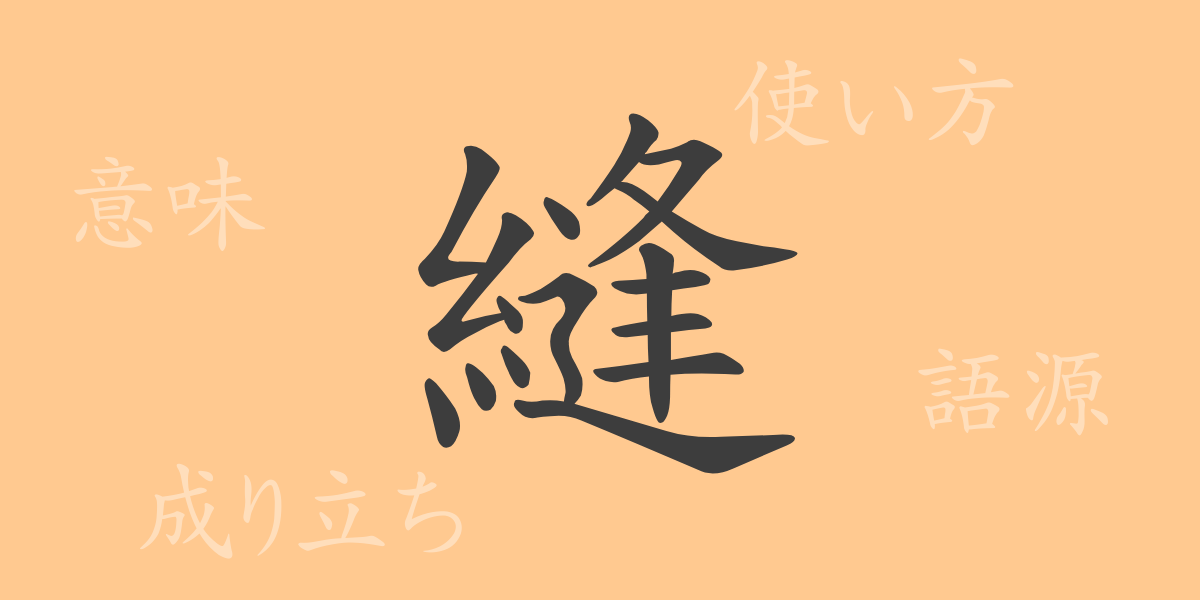Deeply rooted in Japanese culture and closely connected to daily life, kanji (漢字) are an integral part of the language. Among them, “縫” (ぬう, nuu) has been passed down from the act of making clothes to become an indispensable part of people’s lives. In this article, we delve into the origins, meanings, usage, and various idioms and proverbs associated with this commonly used kanji, “縫” (ぬう, nuu).
Origins of 縫 (ぬう, nuu)
The kanji “縫” (ぬう, nuu) originated from the act of mending clothes. It is believed to have been created in ancient China to represent the action of connecting fabric with a needle and thread. The character combines the “糸” (いと, ito) radical, which denotes thread, with “逢” (あう, au), symbolizing the action, thus representing the act of tying something with thread.
Meanings and Usage of 縫 (ぬう, nuu)
The primary meaning of “縫” (ぬう, nuu) is to sew or stitch materials like cloth or leather using a needle and thread. It plays a crucial role as a verb in daily life, encompassing activities such as sewing garments and mending tears. Additionally, it is metaphorically used to describe the close connection between people, expressed as “縫う” (ぬう, nuu).
Reading, Stroke Count, and Radical of 縫 (ぬう, nuu)
The kanji “縫” (ぬう, nuu) is widely used as a commonly used kanji in Japan.
- Reading: On’yomi (音読み) as “ホウ” (ほう, hou), Kun’yomi (訓読み) as “ぬ.う” (ぬう, nuu)
- Stroke Count: 16 strokes
- Radical: 糸部 (いとへん, itohen)
Idioms, Phrases, and Proverbs Using 縫 (ぬう, nuu) and Their Meanings
There are many idioms, phrases, and proverbs that include “縫” (ぬう, nuu). For example, “縫い針” (ぬいばり, nuibari) literally refers to a sewing needle, but it is also used to express the idea of putting thought into each action, as in “一針縫うごとに思いを込める” (ひとはりぬうごとにおもいをこめる, hitohari nuu goto ni omoi wo komeru). The term “縫合” (ほうごう, hougou) is often used in medical contexts, meaning to stitch together an incision. Additionally, the idiom “口を縫う” (くちをぬう, kuchi wo nuu) means to keep silent and say nothing.
Summary of 縫 (ぬう, nuu)
The kanji “縫” (ぬう, nuu) has been closely related to people’s lives since ancient times, and it continues to be used in various contexts today. From the fundamental act of making clothes to symbolic expressions of heartfelt actions, understanding the rich meanings of this single character can deepen your appreciation of the Japanese language.

























